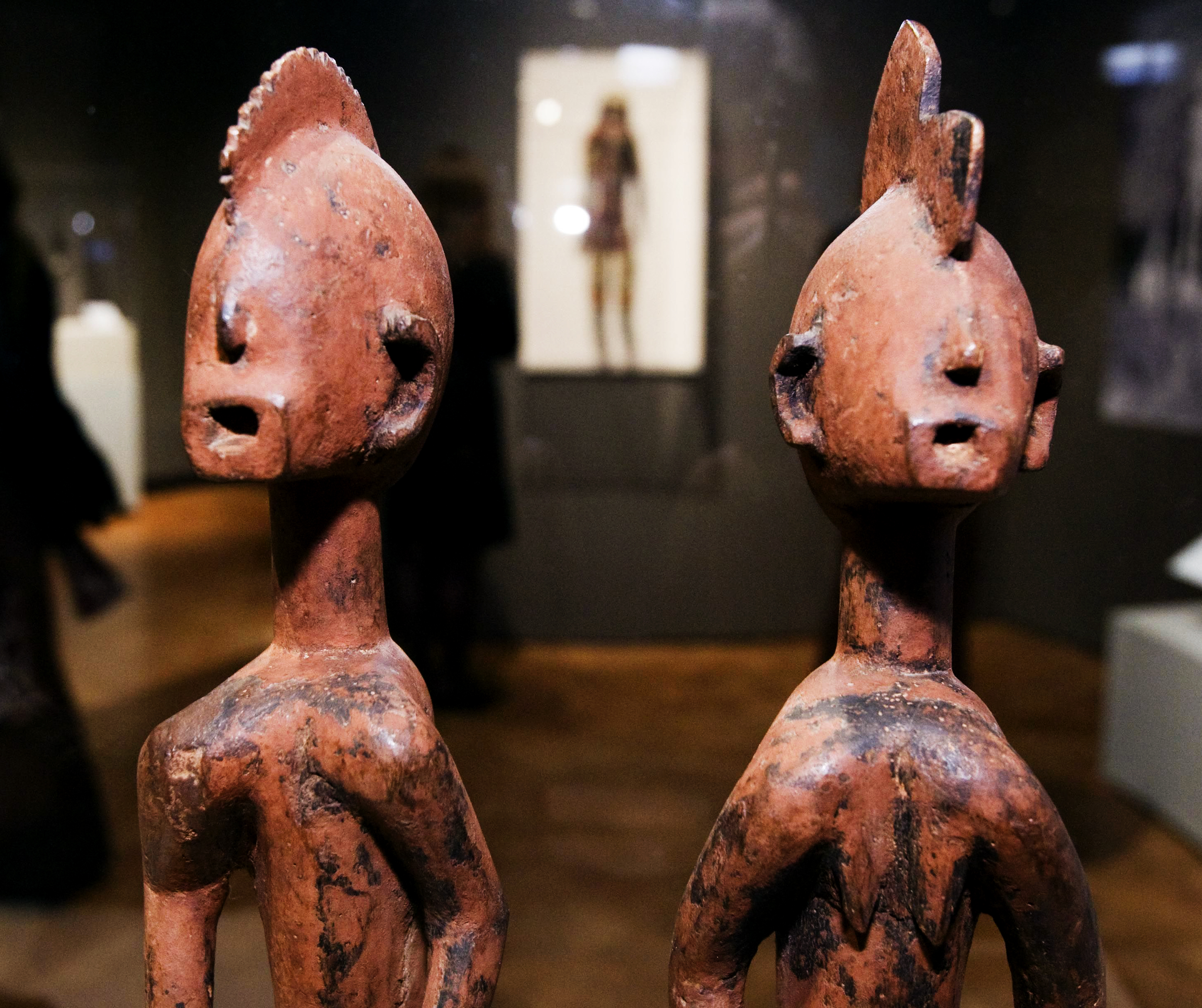Behind the display case sit objects believed to have powerful healing abilities. A piece shaped like a spiky and broken-down spine was once used to alleviate back problems. Designed to look like the very illnesses that they are meant to cure, these ceramic healing vessels are among some of the most compelling works present at Fowler’s latest exhibition.
Nearly 30 years since its inception, the exhibition “Central Nigeria Unmasked: Arts of the Benue River Valley” was unveiled at the Fowler Museum this past Saturday. The exhibition, which will be on display in the J. Paul Getty Trust Gallery through July 24, features art from a remote region in central Nigeria called the Benue River Valley.
According to Marla Berns, museum director and one of the curators for the project, the artistic traditions of this diverse region have been vastly understudied compared to the more extensively researched societies of northern and southern Nigeria. The desire to shed light on these important artworks and put this area on the map inspired the idea for the exhibition.
With more than 150 pieces collected from more than 25 ethnic groups living along the river, the exhibition strives to show the striking aesthetics of the objects produced within the region and emphasizes the connections between these masterpieces and the people who make them.
“The intention is to have people notice relationships across cultures and relationships that are both stylistic and functional,” Berns said. “(It shows) how much objects can bear witness to history in an area where we have so few written records of what those specific histories are.”
Arnold Rubin, late art history professor and also mentor and dissertation adviser to Berns, first proposed the idea for the exhibition in the early 1980s after having done fieldwork in central Nigeria.
Exhibition curator Sidney Kasfir said that Rubin created a collaborative team of researchers for the project in Nigeria in order to help him make his ideas into a reality. However, Rubin was diagnosed with cancer and passed away in 1988, leaving his project behind unfinished.
“The situation was simply put on hold,” said Kasfir, who also served as a member of Rubin’s team. “We knew we wanted to do a show but there was no impetus to push it forward at that point.”
Progress on the exhibition was delayed until about five years ago, when Berns became the director of Fowler and the museum joined forces with the Musee du quai Branly in Paris. Under these new circumstances, Berns decided to pick up the pieces of her mentor’s unfinished project and was determined to create the exhibition that Rubin had envisioned.
“Central Nigeria Unmasked” features dynamic and elaborate artworks taken from collections all over the world, including the Metropolitan Museum of Art in New York and the Art Institute of Chicago. The exhibition is divided into three sections according to region ““ the lower, middle and upper Benue. Berns said that this organization is intended to allow viewers to recognize the distinctness of each area and to perceive how certain aspects are common to the entire valley.
Upon entering the gallery, visitors are greeted with three flat screen televisions showing photographs and videos of the Benue people incorporating art into their daily lives. This use of media throughout the gallery provides context for the art. “They really would be nothing if you just saw a piece of textile in the gallery, so we decided to represent them through a sequence of video clips,” Berns said.
Perhaps some of the most dramatic objects within the exhibition are the large scale vertical masks in the middle Benue section. Worn atop the head, they could make the wearer as tall as nine feet high. These masks were worn during agricultural festivals or for the incarnation of ancestors.
Jenna Kush, the graphics assistant who coordinated the wall panels and display cases, praised the exhibition for its elegance and unconventionality.
“I find these pieces to be a lot different than stereotypical African art that people usually think of. They have a lot of personality,” Kush said. “I think it’s great and it’s a lot different from shows that I’ve seen here in the past.”
